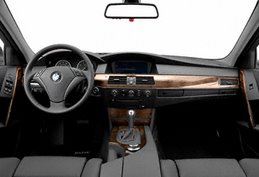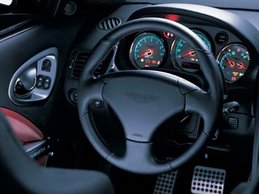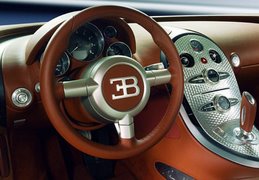 Nissan Xterra Off-Road 4WD - Available between 2000 and 2004, that original Xterra was built around the Frontier pickup's ladder frame—a dated platform comprised of C-section rails made from conventional steel—and came with an available V-6 engine that was not only down on power (even the new-for-2002 supercharged 3.3-liter SOHC 12-valve mill put out a middling 210 horses) but also about as refined as raw sugar.
Nissan Xterra Off-Road 4WD - Available between 2000 and 2004, that original Xterra was built around the Frontier pickup's ladder frame—a dated platform comprised of C-section rails made from conventional steel—and came with an available V-6 engine that was not only down on power (even the new-for-2002 supercharged 3.3-liter SOHC 12-valve mill put out a middling 210 horses) but also about as refined as raw sugar.But since the Xterra's debut five years ago, automakers such as Jeep, Kia, and Land Rover have attempted to copy Nissan's recipe. And why not? The Xterra has been relatively alone in the compact-brute-ute segment, and its sales have never dipped below last year's total of 66,690. Obviously, Nissan is on to something.
To keep the corporate boulder rolling with the second-generation Xterra, Nissan created a beefier look-alike that retains the original's trademarks—a stepped roof with an integrated rack and storage compartment, a liftgate bubble that houses an optional first-aid kit, and an interior with enough cubbies, nets, and tie-downs to make a spree at Costco no sweat—yet builds on those offerings with a latchable and removable lid for that roof-mounted box, a durable plastic covering for the cargo floor and the backs of the 60/40-split second-row seats, and rear side bumper steps to ease loading and unloading gear to and from the roof rack.

For our road test, Nissan lent us an Off-Road 4WD equipped with the standard six-speed and the optional part-time four-wheel drive with a low range. The Off-Road 4WD differs from other trims in that it gets BFGoodrich Rugged Trail tires, a locking rear differential, Bilstein shocks, three skid plates, black body-side molding, and blue fabric seats. And because it's the rock climber of the group, the Off-Road gets more generous approach and departure angles (33.2 and 29.4 degrees, respectively) and is the only trim available with hill-descent control and hill-start assist, both standard with automatic-transmission-equipped versions. The former holds speed downhill while the latter prevents rolling backward on an incline when off the brakes. Our three-pedaled tester also featured a clutch-interlock-override button that makes daunting maneuvers less scary by alleviating the use of the clutch when starting the vehicle and performing first-gear crawls.
Approach the new Xterra, and you'll wonder who threw a flashy chrome grille and a set of big flared fenders on the old model. This latest vehicle's sturdy-looking shell, although entirely new, appears absolutely familiar. Nissan designers didn't mess with the original's styling success; thus, there's no mistaking the new Xterra for some other SUV.
Going down the road, there's little to suggest that the Xterra is anything but a truck. The ride remains distinctly bouncy over bumpy roads, as if you were leisurely navigating rolling seas in a Boston Whaler, and the handling dynamics still fall short of those exhibited by car-based utes. With 9.5 inches of ground clearance and a roof rack that sits six-plus feet above the ground, our test vehicle's center of gravity is not exactly conducive to aggressive cornering, evidenced by its 0.71 g on the skidpad. We're not knocking Nissan here; rather, we're simply pointing out that the Xterra is what it is—a truck. Peek under the bumpers, and wha
 t you see are common truck bits: steel control arms up front and a rigid axle with leaf springs in the rear.
t you see are common truck bits: steel control arms up front and a rigid axle with leaf springs in the rear.The Xterra may be a handful negotiating curves, but it's delightful in a straight line. Power is the name of the game at the drag strip, and the Xterra, well, it got game: 265 horses on the field and 284 pound-feet of torque. A member of Nissan's venerable VQ family, the new 4.0-liter is a gutsy motor with a growl for an engine note. It displays polished refinement at the lower end of the rev range but becomes noticeably raucous rather than simply energetic as the tach needle approaches redline. Nonetheless, the VQ has enough guts to sling the Xterra from 0 to 60 in just 7.3 seconds, which makes Nissan's off-roader quicker than the 310-hp Volkswagen Touareg V-8 and as quick as a 335-hp Porsche Cayenne S. The six-speed does nice work and doesn't hinder velocity—its effort is low, its action is smooth, and its throws, at least by truck standards, are short.













No comments:
Post a Comment